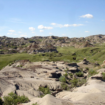Kaumeyer: World Wetlands Day
By LARRY KAUMEYER on February 2, 2022.
What’s happening to Canada’s vanishing wetlands? Without a proper inventory, we won’t truly know. It’s time to take ownership of the multi-billion-dollar asset in our backyard – before it’s too late. Canada trails the world in a critical element of environmental planning – and our wetlands are paying the price. As nations mark World Wetlands Day today, Canada must do more to fulfil its responsibilities to these threatened ecosystems. Estimates put 25 per cent of the world’s remaining marshes, bogs, swamps and other cattail-lined, carbon-rich water bodies inside our borders. But Canada is one of few developed nations that doesn’t have a comprehensive national wetland inventory and monitoring system. This shortfall is more than humbling. It’s a hefty obstacle to addressing the colliding crises of habitat degradation, climate change and biodiversity loss that are impacting the lives of all Canadians. A vital tool in advancing sustainability efforts nationwide, a wetland inventory provides information about the distribution and type of wetlands. Ongoing monitoring systems measure loss rates, track protection and restoration efforts and analyze landscape changes to inform conservation activities. The adage “you can’t manage what you can’t measure” sums up the situation. Mexico, for example, far eclipses Canada in these efforts. Mexico has a national wetland inventory, part of an overarching national water program, it uses to inform decisions about current and future management of wetlands. Canada, despite being a primary custodian of one of the world’s most valuable natural assets, has failed to effectively take stock of what we’ve got. The reality becomes more serious when you consider what’s being lost. Approximately 70 per cent of wetlands have been lost in southern areas of Canada – and up to 95 per cent in densely populated areas. But because a complete picture of the country’s wetlands does not yet exist, figures are likely even higher. Consider this: Canada may be losing wetlands faster than it’s documenting them. Our research institute at Ducks Unlimited Canada studies the direct and indirect impacts of wetland loss on biodiversity, natural resources, carbon sequestration and the economy. The alarming truth is we’re losing wetlands before we’ve fully understood all the downstream effects. This past summer saw the Prairies, southern Ontario and B.C. suffer one of the worst droughts in memory. We are painfully aware that these events significantly impact wetlands and can result in habitat loss that is not recovered. It’s even more reason for a permanent inventory that ensures Canada can be a global leader in sustainability, biodiversity and natural capital. Compared to other natural assets, wetlands have been an underappreciated resource. The world is losing wetlands three times faster than forests, yet Canada has a National Forest Inventory. Significant efforts have been made to understand Canada’s arable land, with annual crop surveys that monitor changes in agricultural land use. So why do wetlands continue to be overlooked and undervalued by policy and decision-makers in national plans? Data we do have about wetlands clearly shows they punch above their weight. Conservative estimates suggest Canada’s wetlands generate more than $25 billion annually. This includes billions worth of flood and drought mitigation, water purification, protection from sea-level rise as well as recreation, tourism and employment income. Over the past year, Canada has made some ambitious international climate commitments. Personally, I don’t believe they can be achieved without a comprehensive inventory and monitoring system for wetlands. How can we accurately report progress on land and water protection goals when we don’t have a baseline? How can we make informed investments and smart policy decisions if we don’t have a clear sense of how landscapes are changing? In which areas should we target limited wetland restoration dollars for maximum carbon capture and sequestration? Undertaking a project of this size and significance may seem daunting. Fortunately, we’re not starting from square one. For nearly 20 years, Ducks Unlimited Canada has been advocating for a national wetland inventory and monitoring system and, with the support of 150-plus conservation partners, has built a database that is 28 per cent complete. Known as the Canadian Wetland Inventory, the work led and hosted by Ducks Unlimited Canada is a good running start. What’s needed now is a firm commitment by the federal government to help finish the race (or, more aptly, the marathon). It’s time to get the job done. To ensure a sustainable future for Canada’s wetlands, we must take stock of what we’ve got. And what we’ve got is well worth the investment. Let’s seize the opportunity and take ownership of the multi-billion-dollar natural asset in our backyard – before it’s too late. Larry Kaumeyer is the chief executive officer of Ducks Unlimited Canada. Established in 1938, Ducks Unlimited Canada is the preeminent conservation organization dedicated to wetlands and a world-leader in water, climate and biodiversity science. 18-17




